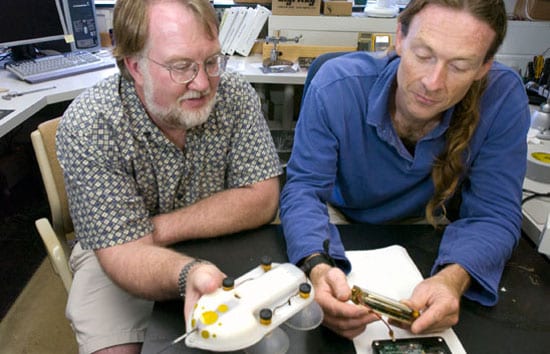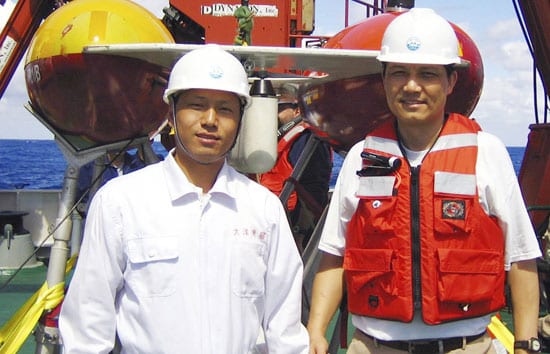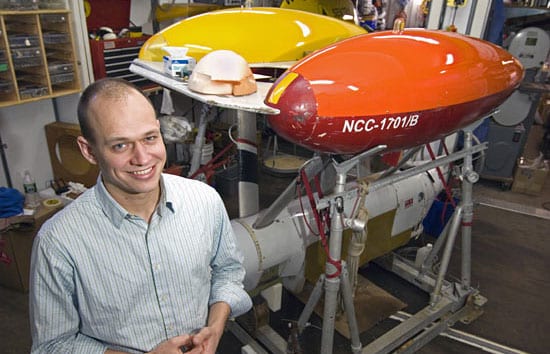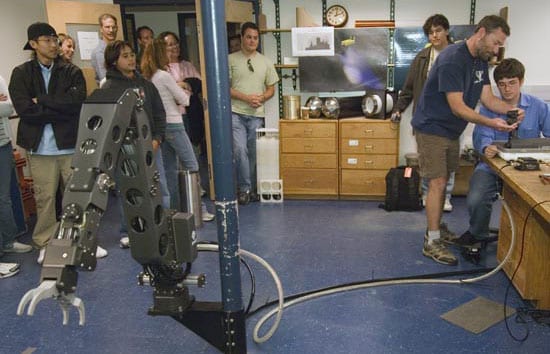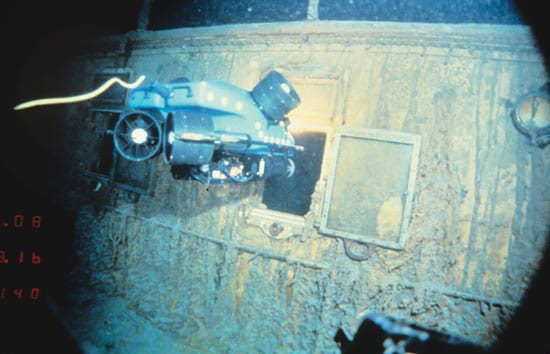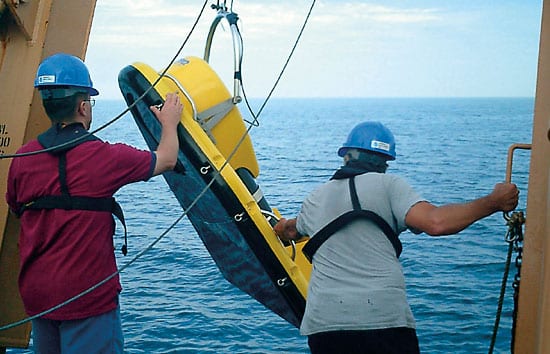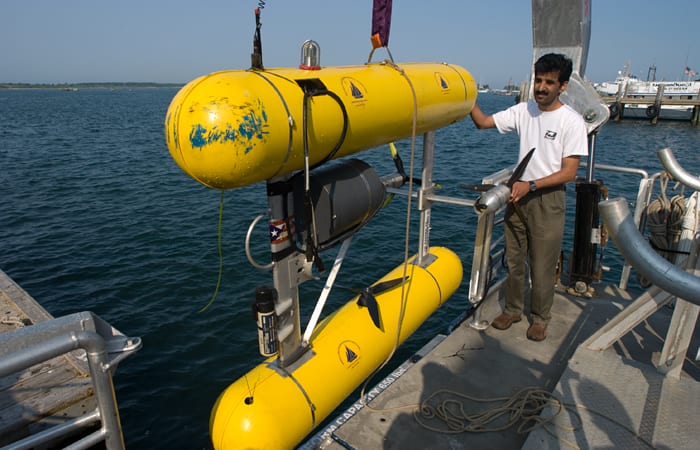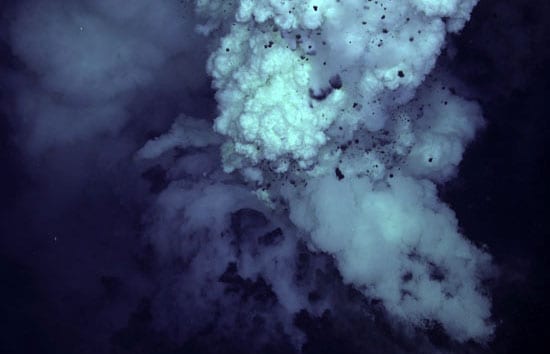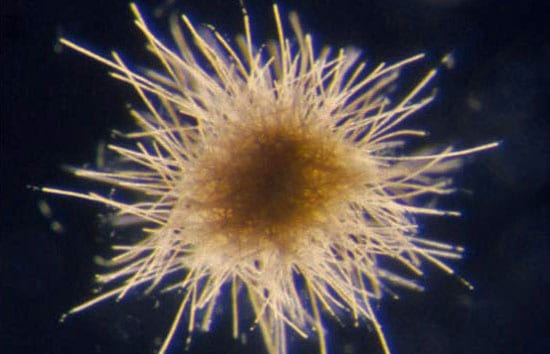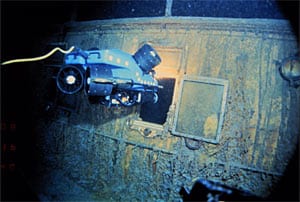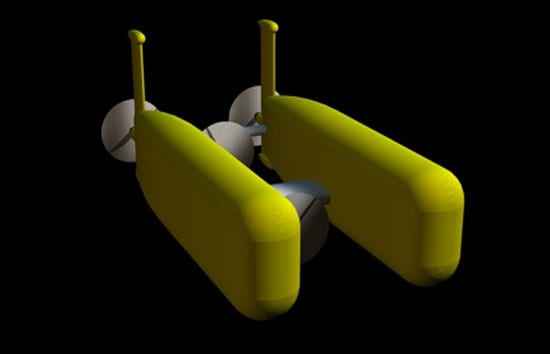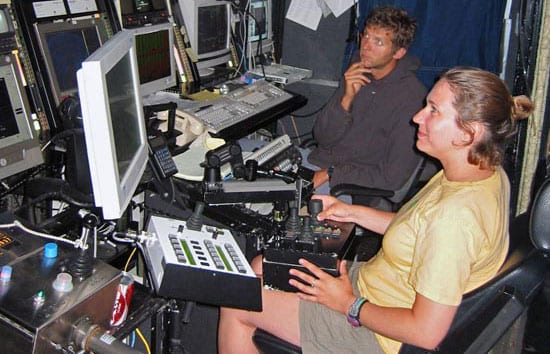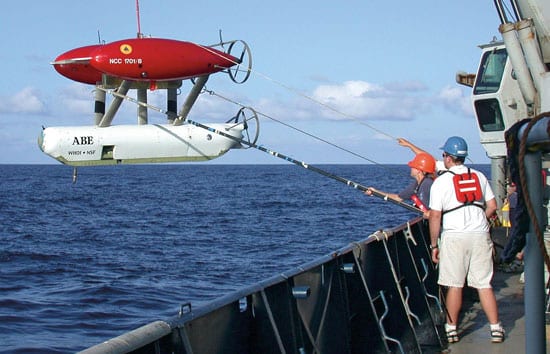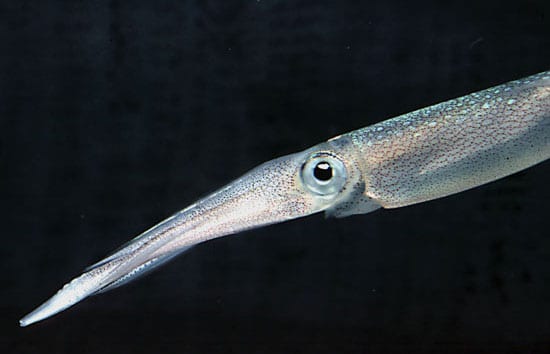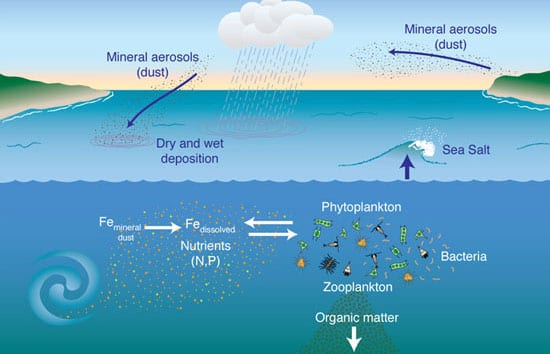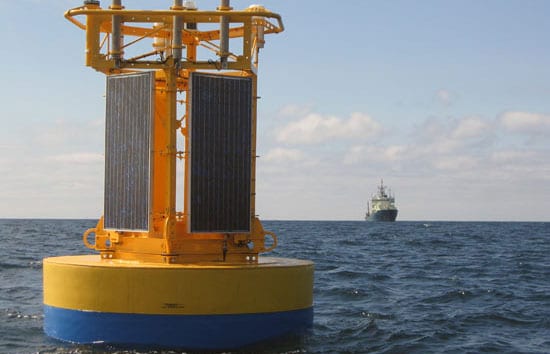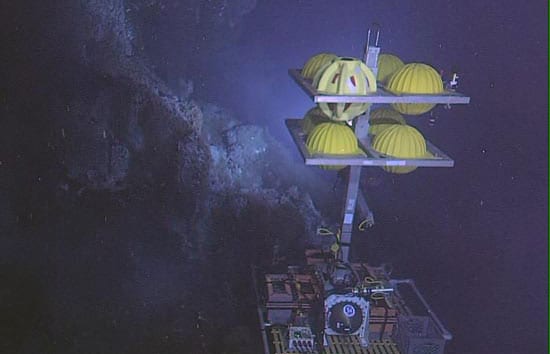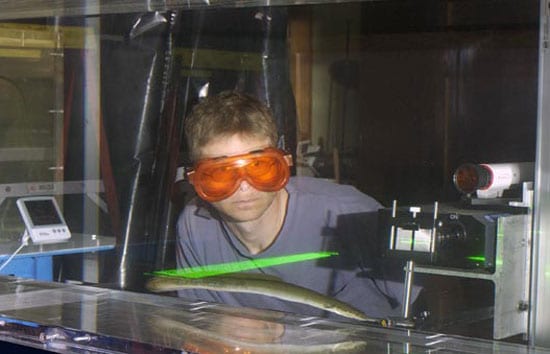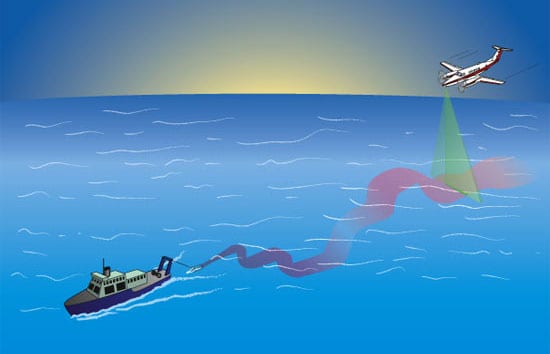Applied Ocean Physics & Engineering
The Deepest Divers
For years, sperm whales and elephant seals were thought to hold world records for holding their breath under water. But those animals have nothing on beaked whales. Using digital tags…
Read MoreExplorers to Use New Robotic Vehicles to Hunt for Life and Hydrothermal Vents on Arctic Seafloor
Researchers will probe the Gakkel Ridge during expedition that begins on July 1.
Read MoreA Ridge Too Slow?
Ever since scientists first discovered vents gushing hot, mineral-rich fluids from the seafloor in the Pacific Ocean 30 years ago, they have found them in various places along the Mid-Ocean…
Read MoreYoung Pup Teaches an Old Robot New Tricks
Mike Jakuba was still a year away from being born when scientists found vents on the seafloor that gushed hot, mineral-rich fluids and were surrounded by bizarre life forms thriving…
Read MoreJim Ledwell Awarded Agassiz Medal by National Academy of Sciences
Oceanographer Jim Ledwell of the Woods Hole Oceanographic Institution (WHOI) has been selected as the winner of the 2007 Alexander Agassiz Medal, awarded by the U.S. National Academy of Sciences…
Read MoreFour WHOI Researchers Recognized for Contributions to Science and Engineering
Four researchers have been recognized by the Woods Hole Oceanographic Institution (WHOI) for their contributions to ocean sciences research and engineering. All will receive funding provided by the endowed awards…
Read MoreHarmful Algal Bloom (Red Tide) Models and Forecasts to be Expanded in Gulf of Maine
A new observation and modeling program focused on the southern Gulf of Maine and adjacent New England shelf waters could aid policymakers in deciding whether or not to re-open, develop,…
Read MoreStudents Visit the Deep-sea Robot They Named
Seven students from a California high school took a field trip to the Woods Hole Oceanographic Institution in September, after they submitted the winning entry in a nationwide contest to name…
Read MoreEngineers Honored for Pioneering Undersea Robot
The engineering team at Woods Hole Oceanographic Institution that built the first fiber-optically cabled deep-sea robot Jason Jr. received the GlobalSpec Great Moments in Engineering award July 14, 2006—on the…
Read MoreListening for Telltale Echoes from Fish
In the 1970s, scientists happened upon a curious phenomenon about sound waves in the ocean and swim bladders in fish: Bony fish have gas-filled sacs inside their abdomens called swim…
Read MoreGone Fish Assessing
Scientists at WHOI are applying new technologies to help the National Marine Fisheries Services assess fish stocks and maintain critical habitats
Read MoreJason Versus the Volcano
Through the camera eyes of the undersea vehicle Jason, scientists were investigating a quietly bubbling pit on the side of a large volcano on the seafloor south of Japan in…
Read MoreOcean Microscope Reveals Surprising Abundance of Life
Towing an underwater video microscope across the Atlantic Ocean, two scientists found unexpected abundances of colonial cyanobacteria that fertilize the oceans with nitrogen. The bacteria may turn out to be…
Read MoreWoods Hole Engineering Team from Titanic Discovery to be Honored
The underwater research vehicle Jason Jr., which gained international attention for its exploration inside the wreck of the R.M.S. Titanic in July 1986, and its engineering team from Woods Hole…
Read MoreNew Hybrid Deep-sea Vehicle Is Christened Nereus
Nereus—a mythical god with a fish tail and a man’s torso—was chosen Sunday (June 25) in a nationwide contest as the name of a first-of-its-kind, deep-sea vehicle under construction at…
Read MoreA Laser Light in the Ocean Depths
Graduate student Anna Michel is adapting laser technology to the murky fluid environment and crushing pressures at depths of 11,000 feet. The goal is to develop an instrument that can directly measure the many elements spewing from hydrothermal vents just as they emerge from Earth?s crust.
Read MoreBuilding a Computer Model to Forecast Red Tides
The algae Alexandrium fundyense are notorious for producing a toxin that accumulates in shellfish such as clams, mussels, and oysters, leading to paralytic shellfish poisoning in humans. The microscopic plants…
Read MoreABE—The Autonomous Benthic Explorer
The pioneering deep-submergence vehicle, now 10 years old, continues to demonstrate its versatility on each new cruise.
Read MoreNew Sonar Method Offers Window into Squid Nurseries
Squid fishing has increased substantially in the past decade, with no way to assess the continuing viability of the stock?until now.
Read MoreDust Busters for the Oceans
Like most living things, microscopic marine plants need iron and other minerals to live and grow. On land, soil provides a ubiquitous source of minerals, but how do essential nutrients…
Read MoreGoing Wireless in the Deep Blue
How do you get long-term ocean measurements from any spot on the globe, with day by day feedback and low costs? If you are Dan Frye of the WHOI Advanced Engineering Laboratory, you take an old oceanographic concept?the moored buoy?and bring it into the 21st century with wireless technology.
Read MoreAction, Camera … Lights
Exploring the sunless seafloor can be like using a flashlight to find something in a dark basement. Now Woods Hole Oceanographic Institution scientists and engineers have built a portable light system to illuminate the depths, essentially transforming areas of the deep sea into a photography studio.
Read MoreScientists Find a New Twist in How Squids Swim
Erik Anderson was vexed by some scientific papers he read during his first year of graduate studies. Engineers had asserted that squids likely propelled themselves through water by creating vortex rings. Anderson begged to differ. Together with Mark Grosenbaugh, he set up a series of experiments to check the theories against some observational evidence.
Read MoreAn Experiment to Dye For
WHOI scientists are exploring an experimental technique to track the complex movements of water in the oceans using harmless fluorescent dyes and airplanes equipped with Light Detection and Ranging instruments. To detect motion, LIDAR uses pulses of laser light, which cause the flowing dye to fluoresce.
Read More
